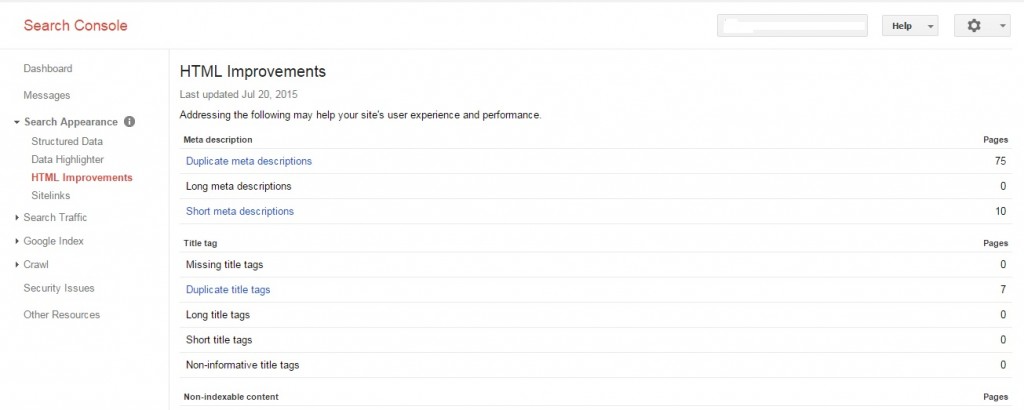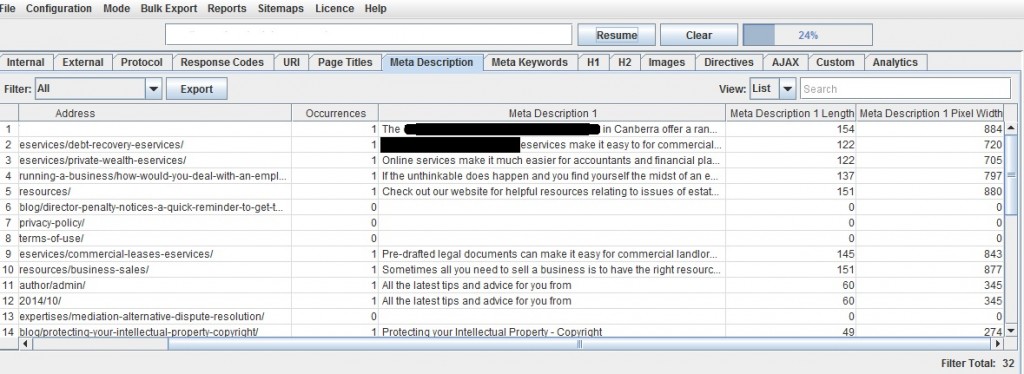On-site SEO, as we all know, have a significant impact on ensuring search engines can crawl and index our website pages, thus paving way for our visitors to enjoy the site. Now, there are quite a lot of factors that should be considered for on-site SEO, but we are going to look into a couple of the most critical ones here, and that is Meta Titles & Descriptions.
They are an important and strategic way of getting on a search engine’s radar and being noticed by a visitor. Let’s take a look at what to do and what not to do in optimizing Meta Titles & Descriptions.
Before we move on, if you need any kind of help with SEO, you should definitely reach out to us. Check out our team. Let’s talk.
Meta Titles
Meta Titles, also called as Title Tags, describe the title of a page to the search engine and the user. They are important elements of SEO since title tags are displayed on Search Engine Results Page (SERPs) as the heading of your website or page.
Meta titles provide relevant information on the content of the website or page, thus increasing user experience, resulting in higher clicks and click through rates. A missing <title> element from a page will result in an invalid HTML page.
Importance of Meta Titles
Meta titles are the first things that a user sees on the SERP when he/she searches for a website or page. They are the main text that describe the content of a site or page in a concise form, and appear in three important places:
- Browser: Title tags show up on the top of the browser and tabs, providing info on which page or site you land on.
- Search Engines: Search engines like Google will give priority to your titles if they have relevant keywords. This gives your website better visibility when a user searches a query related to relevant keywords, resulting in a higher click-through rate.
- External Websites: The title tags of a website are often used as link anchor text. This is especially true of social media sites, where the title tags are used while sharing.
Optimizing Meta Titles
Diligently optimized Meta titles can augment web traffic. A title with relevant keywords seems appealing at first look and prompts the user to click in.
Have a look at the screenshot below. The optimized title gives enough information, along with relevant keywords to make an impact on search results and user views.
Now here’s a title that is not properly optimized. You can see how the Meta Title cuts off. Moreover, it doesn’t follow the recommended guidelines of how a title should be written.
Since Meta Titles are such an important part of SEO, it is necessary to stick to some fair practices that would help bring an impact to the optimization task. Here are a few recommendations on what should be done to optimize title tags:
Length: Title tag should ideally be between 50-60 characters. Google’s policy limits the length to 512 pixels, so longer tags will promptly get cut out from the display. If it’s too short then it would miss relevant keywords and the exact context of the page wouldn’t be conveyed properly. A Meta title of around 55 character length will have more visibility.
Keyword Presence: Use relevant keywords while forming a title. Also take care to place them at the start of the title as it would help in ranking and gaining more clicks. Moreover, the user will be able to find what he/she is searching for if the relevant keyword is visible at the start.
Keyword Stuffing: Never stuff the title with Keywords as it would have a negative impact. Search engines would penalize titles that carry recurring keywords and phrases, so make sure that the keywords are used in a natural and unique way.
Duplicate Titles: Beware of title duplication as it would erase out relevant and unique keywords. Make sure you create a title for the page with keywords that are relevant to the content, and ensure you don’t use the title twice.
Branding: Place the brand’s name at the end of the title. This approach is especially good if the brand is not well known or is less relevant than the keyword. However, if the brand is popular enough to gain clicks on its own, then the brand name should be placed first.
Readability: A title tag that is appealing and compelling can result in more clicks. An appropriately optimized title tag can enhance user experience, drawing in visitors and conveying a positive message regarding your business.
Local Optimization: This is a tactical move that enables search engines to pick out searches of local relevancy. Including the local city, state or province in the title tag will increase your local relevance in search results.
Meta Descriptions
Meta Descriptions, as the name implies, is a short preview of the content that is present in a website. They are HTML attributes that are used in SERPs to give users a preview when searching for a particular site.
These descriptions are not seen on the relevant page or website, but only in the search engine results page. It is only viewable to robots within source code.
On a page-by-page basis, you should be able to pop open a site’s source code and find the page’s Meta Description within the <head> area. Moreover, they are not as important as Meta titles in improving search engine rankings but they are critical in generating clicks and click-through rates from SERPs.
They allow searchers to know what is present in a page or site and whether it contains the information they are looking for.
Importance of Meta Descriptions
The short Meta descriptions are visible in search results, so when you are targeting traffic to your website, this description is the first interaction your customer will have with your website. Along with the Meta title, the Meta description will have to be compelling and appealing and provide enough information to the user to make them click the link.
When your description provides informative content that is unique, enticing and different from the other search results, then a user will gravitate towards your link. This can improve your click-through rate (CTR), which can further help in enhancing your search engine rankings.
The screenshot below shows a properly optimized Meta Description that displays enough information that is relevant to the content.
Contrary to the above, here’s a description that hasn’t been optimized properly.
The Meta Description is lengthy and isn’t displayed completely. Moreover, it doesn’t paint a proper picture of the relevant content that the landing page carries.
Optimizing Meta Descriptions
Here are some tips to invite users and improve CTR:
Length: While there are no specified character lengths for descriptions, it is advisable to keep the description within 160 characters. Search engines normally truncate content with more than 160 characters, which could leave your description incomplete.
Unique Content: Provide a content that is readable and informative and unique from other descriptions that might be present on the SERPs. Do not duplicate your Meta descriptions for the website’s home page and inner pages because this will be highlighted in the Google Webmaster Tools.
Looking through Google Webmaster Tools HTML Improvements report is a great way of finding out if you have any duplicate content hiding.
There are also applications like Screaming Frog that can be used in finding out duplicate Meta descriptions.
Duplicate content can result in your website getting reduced organic rankings. A unique content will enhance user experience and can contribute in increased CTR.
Use Call-to-Action: Meta Descriptions are windows to quality and unique content offered by a brand, therefore, having a relevant and targeted message in your landing pages is imperative to keep your visitors engaged. Typically, the beginning of a Meta Description should invoke an action verb, which should be followed by relevant keywords and end with a compelling call-to-action that should entice visitors to click and enter your landing page.
Misleading descriptions can result in visitors entering your site and leaving it quickly, increasing your page’s bounce rate.
Keywords: Use as many keywords as you can in the description, provided the content doesn’t look stuffed or odd. For an ideal description, two keywords are more than enough to catch the user’s attention.
Use primary keywords at the start of the content, with the secondary keywords following towards the end.
Avoid Alphanumeric Characters: When you use alphanumeric characters like quotes, hyphens etc. in the description content, Google will cut out the description, as search engines identify these characters as HTML code and may not use them. If it is necessary to use quotation marks, stick to single quotes rather than double quotes else the content will get truncated.
Find What Works
While there are many guidelines as to how Meta Descriptions have to be formed, there are no hard and fast rules. There are many different ways that you can employ and if you find something that works even if it slightly sidesteps the points that are mentioned here, go ahead and use it.
You might want to make use of Google’s Search Queries Report in Google Webmaster Tools, where you can find and compare the CTRs with respect to URLs, and also determine the keywords instrumental in driving clicks to your page.
If you have the know-how about Meta Description strategies and are able to tinker with your page-level optimization, then you can use this data to your advantage. If you feel that a particular method is conducive to gain a higher CTR, then go for it without hesitation.
The Meta Tag performance of a particular page can be determined by analyzing the CTR of that page. If the page has well optimized Meta Tags, it would improve the clicks to that page; if the clicks haven’t improved, then update the Meta Tags to enhance the CTR.
Carefully optimized Meta descriptions and Title tags are important aspects in search engine optimization, and one of the primary stepping stones in increasing a website’s search engine rankings. Titles and Meta description across all web content can improve your search rankings, by providing context and detail to end users and encouraging click-through to your website.
As always, feel free to reach out to us if you need any help with SEO. That’s all for now, cheers!







Facebook Comments